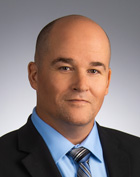Blog
3 ways to leverage your hospital contact center to improve clinical communication
Maximize communication flow and patient satisfaction with your contact center
Are you maximizing one of your hospital’s most valuable resources? In our latest survey of over 200 healthcare professionals, more than 57% of respondents reported their organization’s contact center contributed considerably or a great deal to the patient experience during the COVID-19 pandemic. Check out three ways to ensure this crucial department in your hospital contributes to your overall clinical communication strategy.
1. Simplify the important: Improve critical code response times by speeding up initiation of the workflow
Consider the important role of your contact center in response to emergency codes and how this could be improved with an integrated healthcare operator console in place. When all emergency response sources (facilities, ambulatory, rapid response teams, etc.) and protocols are consolidated into a single function, hospital staff have only one number to call or one button to press to launch a code. With a consolidated enterprise database, operators can log codes and track responses and escalations, make overhead announcements, or message additional staff to allow the care team responding to the code to devote their attention where it matters most: the patient.
2. Maximize flexibility across your team by enabling staff to work anywhere
Healthcare systems had to rapidly pivot during the COVID-19 pandemic and contact center operators in some locations could not continue working in close quarters while maintaining social distancing. At UW Health, the team reconfigured their workstations to enable remote work at the beginning of the pandemic. While there was initial reluctance, built-in reporting has shown no drop in efficiency or productivity, meaning contact centers were able to stay safe and still help keep patient care and satisfaction at the forefront from wherever they were. Read the case study to learn how they did it.
3. Automate and consolidate: Free contact center staff time to improve clinical workflows
Staff at contact centers with consolidated technology solutions are able to streamline many processes. The time savings and more sophisticated tools allow them to handle a wider array of requests, including inquiries about costs and insurance plans, appointment scheduling, event registration, physician-to-physician referrals, nurse triage, as well as consult requests and code alerts. Automated greetings provide routine information to callers, patients and their families get the information they need without being connected to an operator, and this allows the operators to focus on other responsibilities.
Conclusion
Contact centers, the operators, and the embedded workflows are more important today than ever. Hospitals and healthcare systems rely on them to keep information flowing consistently throughout the day. Consolidated enterprise-wide communication technology like the contact center solutions from Spok help tie the contact center more closely to clinical communications and ultimately enhance the patient experience throughout the hospital.
To learn more about how to maximize your contact center, read our guide today: Hospital contact centers: the essential guide.







